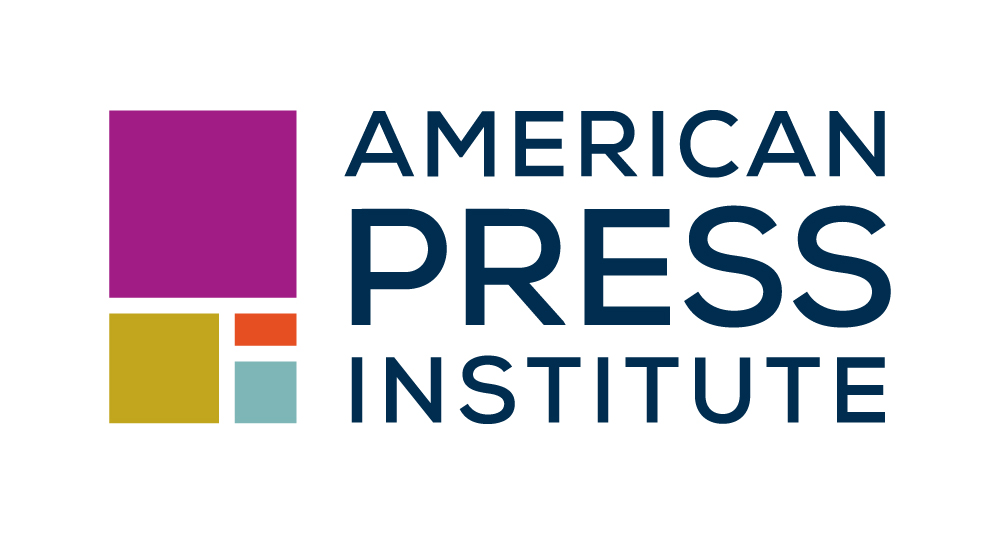
Illustration by Sylvia Asuncion-Crabb
The fifteen strategies outlined in this guide speak to many of the non-negotiables named during the tenure of the Table Stakes Local News Transformation Program, but the local news industry is constantly changing.
As we look ahead to the next five to 10 years, the American Press Institute team brainstormed future non-negotiables that we believe local news organizations must consider to ensure their longevity and resilience.
Some involve doing more of the strategies outlined above — product-thinking, prioritizing audiences and engaged journalism, for example, with our “try this” resources pointing to deeper work in those areas.
In the spirit of “stop-doing” mentioned previously, some non-negotiables involve doing less of or giving up things we may have internalized at some point as necessary for doing local news in the digital age, such as hand-curating homepages and section fronts, relying on social media to drive traffic, and handing over the ownership of your data to third parties.
Below, we share four newer strategies we consider crucial for healthy, responsive local news organizations.

Experimenting with new technology, especially AI
 Why this
Why this
Local news organizations tend to feel like they are playing catch-up when it comes to new technologies. This can lead to a mentality where you’re simply chasing the latest thing because it’s getting hype. Instead, think about designing experiments that focus on how these new technologies can improve your journalism, storytelling or content delivery. Be sure to consider how this technology is contributing to your larger goals, and how you can monitor and measure progress along the way.
At the moment, that technological focus for your organization may be artificial intelligence — or the use of machine learning, automation, structured data process, pattern recognition and tools like ChatGPT. AI has often been met with trepidation within local news organizations. There may be concerns about accuracy, reliability and ethics of using AI tools, how AI embedded in search engines is reducing the amount of search traffic news sites get and AI tools replacing human journalists. But there are also benefits of embracing AI in local news, including personalizing the journalism and advertising experience for audiences on sites and apps, automating processes within the newsroom or with newsgathering, and new storytelling techniques and tools.
 Get started
Get started
- Try using the iceberg model to weigh technological innovation vs. infrastructure, as shared by API’s senior applications engineer, Stephen Jefferson.
- Learn about conscious decision-making practices, in this guide from Reynolds Journalism Institute fellow Kate Myers.
- Use this 5-step framework for evaluating newsroom technology experiments, which Yuen-C Tham developed while she was a Reuters Institute Journalist Fellow.
- Take this self-assessment to see your newsroom’s readiness to embrace AI, from The Associated Press.
- Learn about ChatGPT prompts for local news publishers in this guide, created by Joe Amditis, the associate director of operations at the Center for Cooperative Media.
- Try using AI to help write headlines with the YESEO App on Slack, created by Ryan Restivo through his Reynolds Journalism Institute Fellowship.
- Learn more about the pros and cons of AI in local news, in this report from the Local News Initiative at Northwestern University’s Medill School of Journalism.
- Read other news organizations’ AI policies and learn how to communicate your use of AI with your audiences, in this guide from Trusting News, an API grantee.
- Find more resources and learning materials on AI, from the AI & Local News initiative.

Embracing mental health
 Why this
Why this
There’s been a greater spotlight on mental wellness and mental health in the news industry since the Covid-19 pandemic. Journalists have always had to deal with the psychological toll of witnessing and reporting on traumatic events, but recent years have brought greater mistrust and harassment from the public, and the ongoing stress of the industry’s financial troubles. These stressors have led many journalists to face burnout or leave the industry altogether, and these stressors are compounded for marginalized groups.
The heightened awareness of these challenges has, fortunately, led to an increase in mental health and well-being resources available to journalists and news leaders, and new research into the unique situations journalists face, such as moral injury.
 Get started
Get started
- Review these tips on psychological self-care for journalists, from the International Research and Exchanges Board.
- Find solutions for managing burnout, from the Reynolds Journalism Institute at the University of Missouri.
- Take the five-week mental health reset challenge for news leaders, from API’s vice president of Journalism Strategy, Samantha Ragland.
- Learn about moral injury, identifying the signs and supporting others through it, in this piece by Susan Benkelman for API.
- Find more mental health resources for journalists, in this guide from the American Press Institute.

Ensuring digital safety
 Why this
Why this
Journalists are increasingly the target of online threats and harassment. Though digital harassment does spill over into physical threats and violence, even when that abuse stays digital, the implications are very much felt in the real world. As the International Women’s Media Foundation stresses in its research and training, online violence is a global problem and a press freedom issue. In a survey of women journalists and media workers conducted by IWMF, at least two out of three reported being threatened or harassed online at least once, and 40 percent said they avoided reporting certain types of stories to avoid harassment.
 Get started
Get started
- Bookmark Access Now’s Digital Security Helpline so you have the information handy if you are at risk and need their help strengthening your online security, or if you’re under attack and need rapid-response assistance.
- Remove your personal data from the internet by following this guide, from the Committee to Protect Journalists.
- Learn how to defend yourself and others from online harassment, with this field guide from PEN America.
- Deepen your understanding of digital safety and gather tips in this guide to protecting journalists from online violence from the International Women’s Media Foundation.
- Study the resources on the Online Violence Response Hub, from the Coalition Against Online Violence.
- Read the mental health guide for journalists facing online violence, from the International Women’s Media Foundation.

Educating and communicating with communities
Why this
As local news organizations continue to prioritize audiences, those efforts must also include educating community members on how journalism is made, involving the community in the process and making sure your digital products and platforms clearly communicate this information, through public ethics and corrections policies, for example.
Local news organizations must also help communities learn how to discern what information is true. Fighting disinformation has become a too-often consuming part of working in journalism in recent years. More than 90 percent of reporters and editors say that disinformation has impacted their work, and 76 percent say that they deal with disinformation regularly, according to a nationwide survey conducted by PEN America. Combating disinformation is an element of trust-building, which is key for the long term sustainability of news organizations.
 Get started
Get started
- Study these Trust Kits on creating and communicating how journalism is made and policies such as mission, ethics and corrections, from Trusting News.
- Study this guide for journalists combatting disinformation, developed by PEN America. It includes advice for specific scenarios, including navigating disinformation in breaking news situations and on social media.
- Review the Responsible Reporting Toolkit about covering mis- and disinformation, written by Howard Hardee and produced by the Wisconsin Center for Investigative Journalism and the Center for Journalism Ethics.











